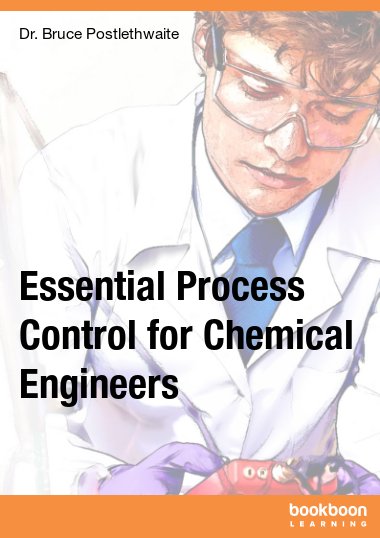- Introduction
- Why do we need control?
- Instrumentation
- What is an instrument?
- Factors to be considered in selecting an instrument
- Instruments for temperature measurement
- Pressure measurement
- Flow measurement
- Level measurement
- Chemical composition
- Communication signals
- Types of communication signal
- Final control elements
- Control valves
- Control valve sizing
- Diagrams for process control systems
- Process flow diagrams (PFDs)
- Piping and instrumentation diagrams (P&IDs)
- Inputs and outputs in control systems
- Process inputs
- Process outputs
- Processes in control engineering
- An example of variables and processes
- Introduction to feedback control
- Feedback control and block diagrams
- Positive and negative feedback
- Control loop problems
- Direction of control action
- Controller hardware
- Introduction to steady-state and dynamic response
- Steady-state gain
- Dynamic response
- Dynamic modelling
- Laplace transforms
- Derivation of basic transforms
- Solution of differential equations using Laplace transforms
- Transfer functions
- Block Diagrams
- Block diagram algebra
- Solutions of responses for high-order systems
- Forming dynamic models
- Analytical solution of real world models
- Types of non-linearity
- Linearisation of non-linear equations
- Simplifying expressions through deviation variables
- Procedure for simplifying and solving a non-linear model
- Putting it all together – a reactant balance for a CSTR
- PID Controller algorithm
- Really simple feedback controller – on-off
- Proportional-integral-derivative (PID) control
- Proportional only control
- Integral only control
- Derivative action
- Proportional-Intergral (PI) control
- PID control response
- Other forms of PID algorithm
- Control system analysis
- Analysis of a typical feedback control system
- The PID algorithm as a transfer function
- Analysis of proportional control of a first-order process
- Example of a first order process under proportional control
- Example of a second-order process under proportional control
- Analysis of integral control of a first-order process
- Controller tuning
- What needs to be done to tune a PID Controller?
- How do you decide what is a good controller performance?
- Some methods of controller tuning
- Control loop health monitoring
- Control loop diagnostics
- More advanced single-loop control arrangements
- Cascade control
- Selective or autioneering control
- Override control
- Ratio control
- Feedforward control
- Design of control systems
- Control envelope
- Multivariable processes
- How to determine the number of controlled variables
- Plantwide mass balance control
- Control system architecture
- The effect of technology on process plant control rooms
- Human factors in control room displays
- Distributed control systems
- Safety Instrumented Systems

